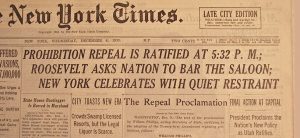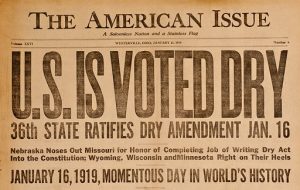On January 16th, 1919, Congress passed the Eighteenth Amendment, outlawing alcohol and the following year, Congress passed the Nineteenth Amendment granting women the right to vote.
In a strange way, these two events were connected to each other. The Women’s Christian Temperance Union had been promoting prohibition for many years, believing alcohol was the cause of many social ills facing our nation. In those days, a man controlled the household money and could drink away the family’s life savings with the wife having little recourse to stop him.
Another factor that played a large role in all of this was World War I. Many women became involved in the war efforts, working in factories, running the house with husbands at war, allowing them to earn their own money and even great freedom.
All of this led America into the Roaring Twenties where consumerism took off. Advances in printing found magazines entering more and more homes, offering a plethora of manufactured goods just waiting to be gobbled up. Sensing a growing market, many companies began to market directly at women, thus giving them an even greater voice to advance their status.
 Fast forward thirteen years and America found itself in the Great Depression. Because of Prohibition, organized crime grew with gangsters taking control of big cities. Both men and women struggled to survive. Many Americans were looking for something to cheer about and their thoughts soon turned to drink.
Fast forward thirteen years and America found itself in the Great Depression. Because of Prohibition, organized crime grew with gangsters taking control of big cities. Both men and women struggled to survive. Many Americans were looking for something to cheer about and their thoughts soon turned to drink.
Franklin D. Roosevelt called for a repeal during the 1932 presidential campaign. He won the election in a landslide and Prohibition was dead one year later. On December 5th, 1933, Utah (being the final state needed for a three quarters majority) the 21st Amendment was ratified repealing Prohibition.

